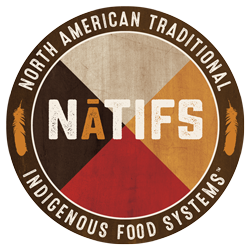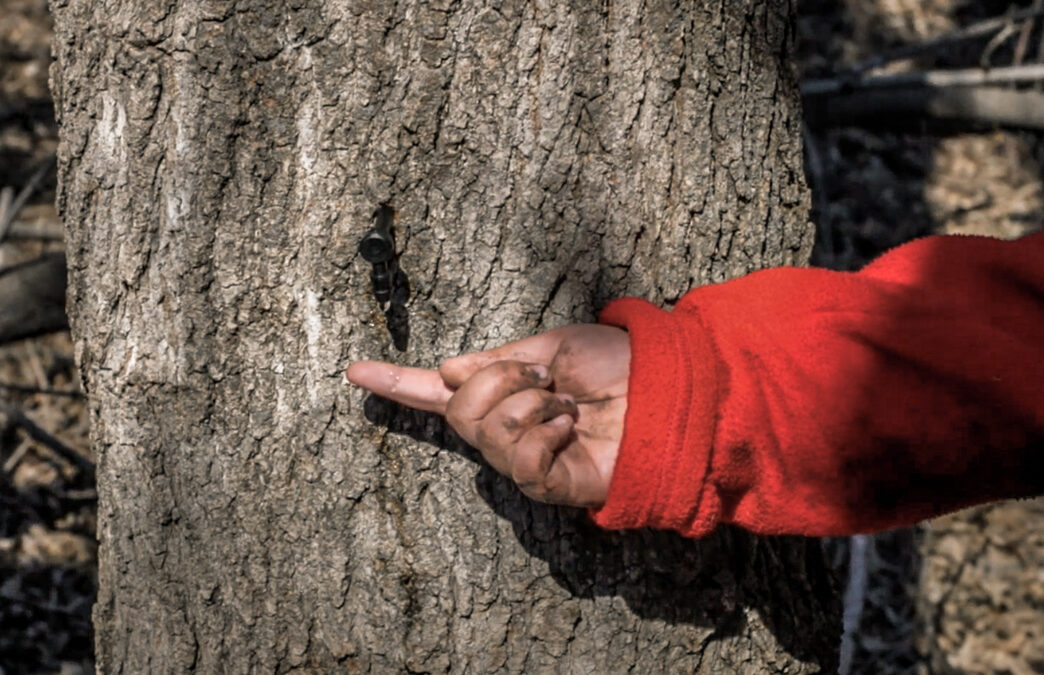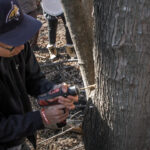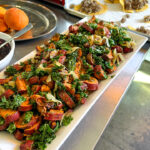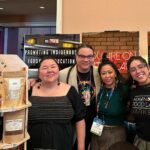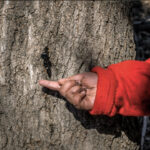Indigenous communities around the world, along with the NATIFS team, have an annual tradition of heading out in the spring to collect sap from trees that usually start flowing in late March to early May.
Black Elk and the NATIFS team decided to use the early Sugarbush as an educational opportunity and tap a few different species of trees to compare and contrast what the sap tastes like and to talk about the impacts of climate change, rather than actually gather a lot of sap right now, at least until it becomes clearer how tapping would affect the trees. As Education Director at NATIFS, Linda Black Elk led the team to Northfield, Minnesota, about 30 minutes south of the Twin Cities. She provided some context for the practice, which some Indigenous communities refer to as “Sugarbush.”
“All over the world sap has been collected, since forever,” Black Elk explains. “It’s a regular practice here [in Minnesota] even through colonization and the theft of Indigenous practices and knowledge around food, Sugarbush is something that has stayed in place – people were even sneaking around to do it when Indigenous traditions became illegal, and for some tribes, it’s actually a sacred act. Some people even look at it as a ceremony, a really sacred time because it’s such an amazing sweet gift.”
The amazing, sweet gift is punctuated further by the brief window of time that the sap typically flows, when daytime temperatures are above freezing, and nighttime temperatures are below freezing.
But this year’s extremely early Sugarbush has many people concerned about the way climate change will impact this year’s harvest, but also how it will affect the trees themselves.
Black Elk is being careful about making an assessment one way or the other.
“There are two schools of thought on this in the Native community right now. One is: we should not be tapping trees this year. There was no rain, there was no snow, and the trees are going to suffer. And then there are other elders and knowledge holders saying even in years like this, Indigenous people knew that they still needed the sap, but they might go easier on the trees and not take as much because the season is shorter. But the trees are super smart and they will only give what they can and they will never give more than that, and this is actually verified by Western Science as well– once a tree has given as much sap as it can, it will not keep giving until it hurts itself. It will stop.”
Still, the early Sugarbush this year doesn’t seem like a standalone anomaly, but instead a harbinger of things to come.
“Maple before Valentine’s Day is just insane,” NATIFS Founder and Executive Director Sean Sherman said. “Along with zero snow, no ice, even on the waters – it just can’t be good.”
However, he continues that this generation is going to have to adjust to the changing climate, particularly if we want to continue to have access to Indigenous foods, and not just commodity food provided by large corporations, which underscores NATIFS’ work, and why it’s so crucial, particularly in this very moment.
“We’re going to have to adjust to climate change, we’re going to have to adjust to water crisis, and that’s why we really need to put food everywhere – not over-processed food that’s in the capitalistic system, but feeding people with the world around us.”
Caleb Kinew Nini Musgrave, a highly respected Ojibwe scientist and forager released a statement encouraging people to hold off on sugaring for now. If it seems too early, it probably is, he said in his post.
“First and foremost, it isn’t sugaring season,” it reads. “If it feels like it’s not the right time to tap, that’s because you are right. It isn’t.”
But choosing whether or not to tap right now is only one small piece of the adjustment that we are all going to have to make as the generation reckons with ensuring that Indigenous foodways will still be available in the future.
“This is just an indication of bigger things to come,” Sherman believes. “We have to learn how to be a larger community, and we have to learn from Indigenous peoples who are seeing this happen in real-time, not just the scientists who use numbers to show data because then that just becomes so political. You can’t argue about what’s going on. It’s not normal to be tapping Maple before Valentine’s Day in February.”
Black Elk and her team will continue to treat the issue as part of the bigger picture for their educational programming at NATIFS.
“This is a really good time to have a conversation about who we are as stewards of the land, and do we trust that the plant nations know what they’re doing and will only give as much as they can give without harming themselves, or do we need to take the initiative to stop ourselves from doing that?”
Time – along with Indigenous knowledge – will tell.
